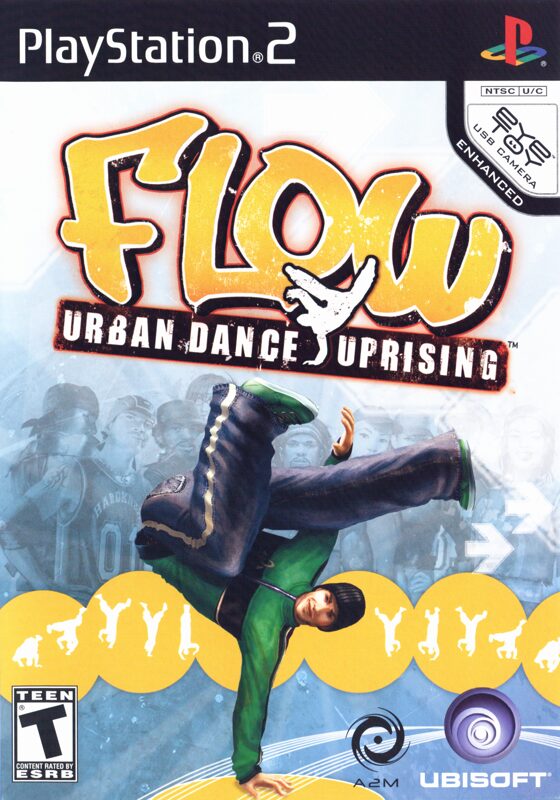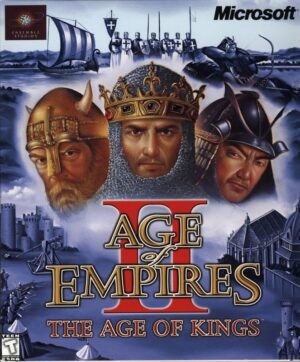Retro Replay Review
Gameplay
FLOW: Urban Dance Uprising delivers a rhythm-based challenge that will put both your reflexes and sense of style to the test. Much like Konami’s Dance Dance Revolution series, the core of the game revolves around hitting directional arrows in time with the beat. What sets FLOW apart is its focus on hip-hop and urban culture, offering a fresh flavor of choreography that feels more grounded in street dance than the J-Pop–heavy lineups of its competitors.
Players can choose whether to dance on a compatible dance pad or simply use a standard gamepad, making the game accessible for newcomers and challenge-seekers alike. The step charts range from beginner to expert, and the game does a solid job of ramping up the difficulty as you progress. Each song demands precision, timing, and the occasional double-tap or slide move, keeping you on your toes well into the later stages.
As you clear songs, FLOW rewards consistency with an array of unlockable bonuses. These include new tracks, playable characters, flashy costumes, and alternative dance venues. The requirements for unlocking content are clearly displayed before each stage, which allows you to set goals—like hitting a certain combo or achieving a target score—so you always feel motivated to improve.
One standout feature is EyeToy support: if you have the accessory, you can see yourself dancing on-screen behind the arrow prompts. This adds an element of self-awareness and fun, especially in group settings or parties. It’s not mandatory to enjoy the core gameplay, but it does heighten the immersion and can lead to some hilarious and memorable moments.
Graphics
Visually, FLOW: Urban Dance Uprising leans heavily into an urban graffiti aesthetic. The menus and stage backgrounds are adorned with spray-paint art, chain-link fences, and neon-lit alleyways, which complement the hip-hop soundtrack perfectly. While the engine isn’t pushing next-gen polygons, the stylized environments have a raw authenticity that aligns well with the game’s street-dance vibe.
The character models are colorful and diverse, each boasting unique outfits and signature dance styles. Unlockable costumes range from oversized hoodies and baggy jeans to fresh kicks and snapback hats, allowing you to personalize your dancer. Animations are smooth and responsive—when you nail a combo, you’ll see your character bust out increasingly elaborate moves that sync seamlessly with the beat.
On the performance side, FLOW runs at a stable frame rate, which is essential for a timing-sensitive title. The arrow prompts and on-screen cues are crisp and easy to read, even when the background gets busy. The EyeToy overlay is functional, though the camera resolution is modest; it still adds a fun, self-referential layer to the presentation without distracting from the core gameplay.
While you won’t find photorealism here, the intentional art style works in FLOW’s favor. The balance of bright, punchy colors and gritty urban textures creates an aesthetic that feels both playful and grounded, matching the energy of classic hip-hop culture and making each song feel like a mini block party.
Story
Unlike narrative-driven rhythm games, FLOW: Urban Dance Uprising doesn’t follow a linear story. Instead, it employs a loose “street battle” framework that frames each dance stage as a competition in a new urban locale. Whether you’re battling under a freeway overpass or owning the dance floor in a downtown club, the sense of progression comes from climbing the ranks of the underground dance scene.
The game gives you a roster of diverse characters to choose from, each with their own backstory and dance personality. While these bios are brief, they serve to contextualize your journey from aspiring street dancer to urban dance legend. The minor narrative details—such as graffiti tags you unlock or rival crews you face—add just enough flavor without bogging down the gameplay.
Dialogues between stages are minimal, focusing instead on setting up the next musical showdown with your crew or an NPC rival. This streamlined approach keeps the pace brisk, ensuring you spend most of your time dancing rather than reading cutscenes. For fans who want a deeper narrative, the real story unfolds in the music itself—each song’s mood, history, and groove tells a piece of hip-hop’s larger cultural tale.
Overall, FLOW’s narrative structure is light but effective. It strikes a good balance by providing just enough context to make each stage feel meaningful, all while keeping the spotlight firmly on the rhythm-action gameplay that players came for.
Overall Experience
FLOW: Urban Dance Uprising offers a refreshing take on the dance genre by centering itself on hip-hop culture rather than pop. With fifty classic tracks—from The Sugarhill Gang’s old-school bangers to Kurtis Blow’s iconic rhythms—the game curates a soundtrack that appeals to both hip-hop purists and newcomers. The variety of songs and difficulty levels ensures that you’ll always have a fresh challenge on your hands.
The combination of responsive controls, generous unlockables, and optional EyeToy integration makes FLOW a standout party game. It’s easy enough for casual players to pick up, yet deep enough for rhythm-game veterans seeking a new experience. Each successful performance unlocks new characters, costumes, and venues, giving you plenty of reasons to return to earlier tracks and chase higher scores.
GRAPHICS-wise, the game nails its urban style without overcomplicating the presentation, and the performance remains rock-solid even during the most intense sequences. The absence of a heavy story is hardly a drawback here; instead, FLOW focuses on the essentials of dance gameplay, delivering it with confidence and street-level flair.
Whether you’re throwing a dance-off with friends or practicing solo to polish your combos, FLOW: Urban Dance Uprising is a solid package for anyone who loves rhythm games and hip-hop culture. Its blend of engaging gameplay, authentic aesthetics, and memorable soundtrack makes it a worthy addition to any gamer’s collection.
 Retro Replay Retro Replay gaming reviews, news, emulation, geek stuff and more!
Retro Replay Retro Replay gaming reviews, news, emulation, geek stuff and more!




Reviews
There are no reviews yet.